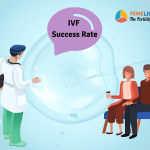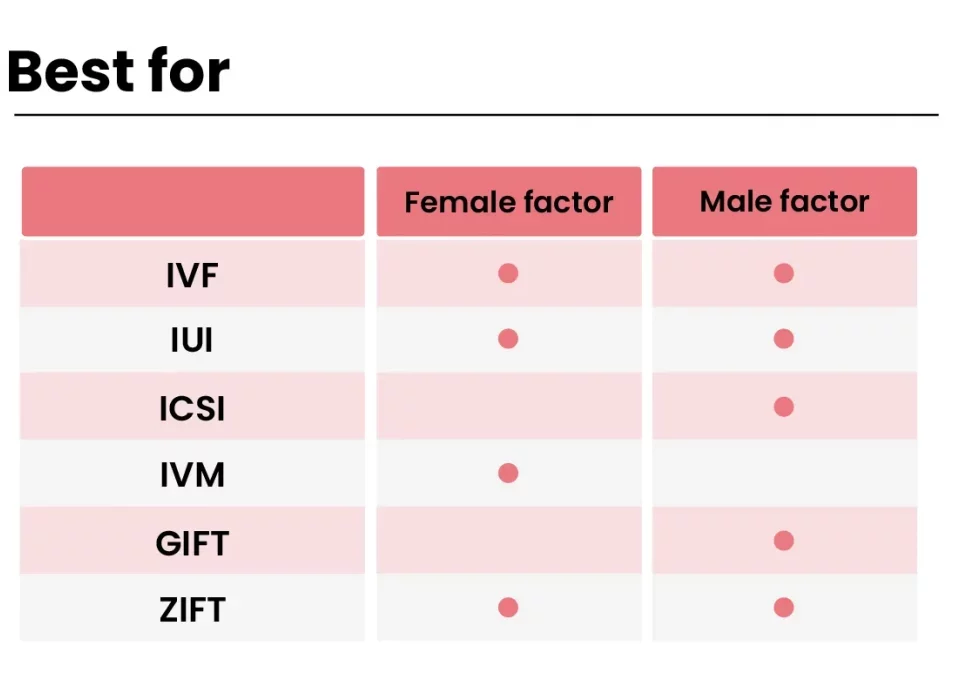
What Is the Success Rate of IVF?
April 5, 2025
What Was in the IVF Bill? A Deep Dive into the Fight for Fertility Rights
April 5, 2025How Does IVF Work? A Step-by-Step Guide to Your Fertility Journey

How Does IVF Work? A Step-by-Step Guide to Your Fertility Journey
In vitro fertilization, or IVF, is like a helping hand for people dreaming of starting a family but facing roadblocks. It’s a process that brings eggs and sperm together outside the body, giving them a chance to create an embryo that can grow into a baby. If you’ve ever wondered how this incredible science works—or if it might be the right path for you—this guide will walk you through every step. We’ll break it down into bite-sized pieces, sprinkle in some real-world insights, and even share a few things you won’t find in most articles. Ready? Let’s dive in.
What Is IVF, Anyway?
IVF is a fertility treatment where doctors take eggs from a woman’s ovaries, mix them with sperm in a lab, and then place the resulting embryo back into the uterus. The term “in vitro” just means “in glass,” a nod to the lab dishes where the magic happens. It’s been around since 1978, when the first IVF baby, Louise Brown, was born in England. Since then, millions of families have welcomed babies thanks to this process.
Think of IVF as a backup plan for when nature needs a nudge. Maybe the fallopian tubes are blocked, sperm aren’t swimming well, or age is making things tricky. Whatever the reason, IVF steps in to bridge the gap. It’s not a one-size-fits-all fix, but it’s a powerful tool that’s helped countless people hear the pitter-patter of little feet.
Step 1: Getting Your Ovaries Ready
The IVF journey starts with preparing your body to produce eggs—lots of them. Normally, your ovaries release one egg a month during ovulation. But with IVF, doctors want more eggs to increase the chances of success. How do they do it? With hormone shots.
For about 10 to 14 days, you’ll inject fertility drugs like follicle-stimulating hormone (FSH). These meds tell your ovaries, “Hey, let’s make a bunch of eggs this time!” You might feel a bit bloated or moody—like a supercharged version of PMS—but it’s all part of the plan. Doctors keep a close eye on you with ultrasounds and blood tests to see how those eggs are growing.
What to Expect
- Daily Shots: You’ll learn to give yourself these injections (or rope in a partner to help).
- Clinic Visits: Expect a few trips for monitoring—usually 4 to 6 times over two weeks.
- Side Effects: Some bloating, mild cramps, or tiredness are normal.
Pro Tip: Keep a small journal to track how you feel each day. It’ll help you spot patterns and feel more in control.
Step 2: Collecting the Eggs
Once your eggs are ripe and ready—usually when they’re about 18-20 millimeters in size—it’s time for the egg retrieval. This happens about 36 hours after a final “trigger shot” of a hormone called hCG, which tells the eggs to finish maturing.
The retrieval is a quick procedure done under light sedation. A doctor uses an ultrasound-guided needle to gently pull the eggs from your ovaries through the vaginal wall. It sounds intense, but most people say it’s like a deep sleep—you’re out for 20-30 minutes and wake up with no memory of it.
Fun Fact
On average, doctors retrieve 8-15 eggs per cycle, though this varies based on age and health. Younger women often produce more, while those over 35 might get fewer.
What Happens Next?
The eggs head straight to the lab, where they’re prepped to meet some sperm. Meanwhile, you’ll rest for an hour or two before heading home. You might feel crampy or spot a little blood—totally normal—but call your doctor if anything feels off.
Step 3: Fertilizing the Eggs
Now comes the star of the show: fertilization. In the lab, embryologists (fancy scientists who handle eggs and sperm) combine the eggs with sperm. There are two ways this can happen:
- Standard IVF: Sperm and eggs are mixed in a dish, and nature takes its course.
- ICSI (Intracytoplasmic Sperm Injection): If the sperm need extra help, a single sperm is injected directly into each egg.
After 18-24 hours, the team checks to see if fertilization worked. A fertilized egg becomes an embryo, and over the next few days, it starts dividing into more cells—like a tiny snowball rolling downhill.
Did You Know?
Not all eggs fertilize successfully. About 60-80% typically do, depending on factors like sperm quality and egg health. The embryos then grow for 3-5 days in a cozy incubator that mimics the body’s conditions.
Quick Quiz: How many days do embryos usually grow in the lab before transfer?
A) 1-2 days
B) 3-5 days
C) 7-10 days
(Answer: B—keep reading to see what happens next!)
Step 4: Transferring the Embryo
After a few days, the strongest embryos are ready to move into the uterus. This step, called the embryo transfer, is pretty simple—no sedation needed. The doctor uses a thin tube (catheter) to place one or two embryos into your uterus through the cervix. It feels like a pap smear—mildly uncomfortable but quick.
You might wonder: why not transfer all the embryos? Well, putting in more than one or two raises the chance of twins or triplets, which can be riskier for both mom and babies. Any extra healthy embryos can be frozen for later—more on that in a bit.
What to Expect
- Timing: Transfers usually happen on day 3 or day 5 of embryo growth.
- Rest: You’ll lie down for 20-30 minutes after, then go home to take it easy.
- Feelings: Some mild cramping or spotting is common.
Pro Tip: Bring a comfy pillow or blanket to the clinic—it’s a small comfort that makes a big difference.
Step 5: The Waiting Game
Now comes the hardest part: waiting. About 10-14 days after the transfer, you’ll take a pregnancy test to see if the embryo implanted in your uterus lining. This two-week wait can feel endless, with every twinge or symptom sparking hope or worry.
How to Survive the Wait
✔️ Stay Busy: Pick up a hobby, binge a show, or plan a low-key outing.
✔️ Lean on Support: Chat with a friend, partner, or support group.
❌ Don’t Test Early: Home tests can give false results before the official date.
If the test is positive, congrats—you’re pregnant! You’ll start regular checkups to monitor the pregnancy. If it’s negative, don’t lose hope. Many people need a few cycles to succeed, and your doctor can tweak the plan for next time.
What Makes IVF Success Tick?
IVF isn’t a guaranteed win, but lots of factors play into your odds. Age is a big one—women under 35 have a live birth rate of about 50% per cycle, while it drops to 8% for those over 40, according to 2021 data from the Society for Assisted Reproductive Technology (SART). Other factors include egg quality, sperm health, and the reason for infertility.
Success Rates by Age (2021 SART Data)
| Age Group | Live Birth Rate per Cycle |
|---|---|
| Under 35 | 50.8% |
| 35-37 | 37.2% |
| 38-40 | 23.5% |
| 41-42 | 11.8% |
| Over 42 | 7.9% |
Unique Insight: Recent studies suggest that lifestyle tweaks—like cutting stress or eating more antioxidants—might boost success rates slightly. A 2023 study in Fertility and Sterility found women who meditated daily during IVF had a 5% higher implantation rate. Small, but worth a try, right?
The Freezing Factor: A Game-Changer
One thing that sets modern IVF apart is embryo freezing. If you’ve got extra embryos after a transfer, they can be cryopreserved—frozen in liquid nitrogen at -196°C. These frozen embryos can be thawed and used later, either for another try or a future sibling.
Why Freeze?
- Flexibility: You don’t have to start from scratch if the first transfer fails.
- Higher Success: Frozen embryo transfers (FET) often have slightly better live birth rates—up to 55% for women under 35, per SART.
- Timing: It lets you space out pregnancies or wait until life feels right.
Real Story: Take Sarah, a 38-year-old from California. Her first fresh transfer didn’t work, but a frozen embryo from the same cycle led to her son, Max, born in 2024. Freezing gave her a second shot without the full IVF rigmarole.
Costs and Coverage: What’s the Deal?
IVF isn’t cheap. A single cycle in the U.S. can run $12,000-$20,000, not counting meds (another $3,000-$5,000). Insurance coverage varies wildly—some states like New York mandate partial coverage, while others leave you on your own.
Ways to Save
✔️ Grants: Look into groups like Baby Quest Foundation—they offer financial help.
✔️ Clinics with Packages: Some offer multi-cycle discounts.
✔️ Tax Breaks: Check if you qualify for medical expense deductions.
Hidden Gem: A few clinics now offer “mini-IVF,” a lower-dose option that cuts costs to $5,000-$7,000. Success rates are lower, but it’s a budget-friendly start for some.
Risks and Realities
IVF is safe overall, but it’s not risk-free. The hormone shots can sometimes overstimulate the ovaries (a condition called OHSS), causing pain or swelling in about 1-5% of cases. There’s also a small chance of ectopic pregnancy (2-5%) or multiples if more than one embryo is transferred.
Lesser-Known Risks
- Emotional Toll: The ups and downs can strain your mental health—studies show 30% of IVF patients report anxiety or depression during treatment.
- Egg Retrieval Complications: Rare, but bleeding or infection can happen (less than 0.5%).
Self-Care Tip: Build a support squad—friends, a therapist, or an online community. It’s okay to feel overwhelmed.
IVF Myths vs. Facts
There’s a lot of chatter about IVF out there, so let’s clear up a few things.
Myth #1: IVF Babies Are Different
Fact: Nope! Studies, like one from the CDC in 2022, show IVF babies are just as healthy as naturally conceived ones, though there’s a slight uptick in preterm birth with multiples.
Myth #2: It Always Works the First Time
Fact: Only about 30-50% of cycles lead to a baby on the first try. Patience is key.
Myth #3: It’s Only for Women
Fact: IVF helps men with low sperm counts too, especially with ICSI.
Quick Poll: What’s the biggest IVF myth you’ve heard? Drop your answer in the comments—I’d love to bust it for you!
Beyond the Basics: New Frontiers in IVF
IVF isn’t standing still. Scientists are pushing the envelope with cool new tricks.
1. Time-Lapse Imaging
Some clinics use cameras to watch embryos grow in real time, picking the healthiest ones without disturbing them. A 2024 study in Human Reproduction found this boosted success rates by 10% in some groups.
2. Mitochondrial Boost
For older women, researchers are testing ways to “recharge” eggs with healthy mitochondria (the cell’s powerhouses). Early trials in 2023 showed promise, though it’s not widely available yet.
3. AI Selection
Artificial intelligence is stepping in to analyze embryos, predicting which ones are most likely to implant. A 2025 pilot study from Stanford saw a 15% jump in success rates—pretty futuristic, huh?
Unique Angle: Most articles skip this, but these advances could cut the number of cycles you need, saving time and money. Keep an eye on clinics offering these options.
What No One Tells You: The Emotional Ride
IVF isn’t just needles and labs—it’s a rollercoaster of hope, fear, and everything in between. One day you’re picturing baby names; the next, you’re crying over a negative test. It’s normal to feel this way, but it’s not talked about enough.
Coping Strategies
- Mini Wins: Celebrate small steps, like a good egg haul or a smooth transfer.
- Break Days: Take a day off from thinking about IVF—go for a hike or bake cookies.
- Partner Sync: Talk openly with your partner; mismatched feelings can sneak up on you.
Real Talk: A friend of mine, Jen, said her third IVF cycle felt like climbing a mountain blindfolded. When it worked, she cried for a week—happy tears, but still tears. You’re not alone in this.
Your IVF Action Plan
Ready to explore IVF? Here’s a roadmap to get started.
Step-by-Step Guide
- Find a Clinic: Look for one with high success rates (check SART.org) and good reviews.
- Meet a Specialist: A reproductive endocrinologist will run tests—like hormone levels or a semen analysis—to see if IVF fits.
- Ask Questions: How many embryos will they transfer? What’s their freezing process?
- Plan Finances: Get a cost breakdown and explore payment options.
- Prep Your Body: Eat well, sleep lots, and maybe try yoga—small habits add up.
Pro Tip: Bring a notebook to your first appointment. Jotting down details keeps you grounded when info overload hits.
IVF Around the World
IVF isn’t the same everywhere. In Japan, cherry blossom season (peaking now in 2025!) coincides with a spike in IVF cycles—maybe the renewal vibe inspires hope. In Europe, places like Denmark cover up to three cycles for free, while the U.S. lags on public funding. These differences shape how people experience IVF, from cost to culture.
Fun Stat: Globally, over 12 million IVF babies have been born by 2023, per the International Committee for Monitoring Assisted Reproductive Technologies. That’s a lot of miracles!
Wrapping It Up: Your IVF Story Starts Here
IVF is a journey—sometimes bumpy, often amazing. It’s about taking eggs and sperm, giving them a lab-made chance at life, and hoping they settle into a cozy uterine home. From hormone shots to embryo transfers, every step builds toward that dream of a family. Sure, it’s got challenges—costs, waits, and what-ifs—but it’s also packed with hope, science, and stories of triumph.
What’s your next move? Maybe it’s a chat with a doctor, a deep dive into freezing options, or just soaking in this guide with a cup of tea. Wherever you’re at, know this: IVF isn’t just a process—it’s a path to possibility. And who knows? Your story might be the next one inspiring someone else.

